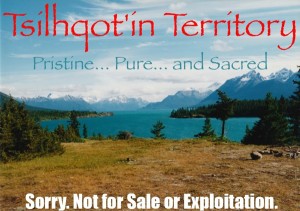Article:http://www.vancouversun.com/news/metro/Unilateral+park+declared+Tsilhqot+includes+Prosperity+mine/10192766/story.html
Picture Reference:http://quesnelcariboosentinel.com/tsilhqot%E2%80%99-nation-consultation-prosperity-mine-proposal
The first nation has fought against the government for centuries to get back their deserved land and rights. According to what the article said, the industry was not allowed to mine or log NEAR their land by the Tsilhqot’in nation recently.
From the perspective of the industry, their development plan has been hindered because the first nation asserted mining/logging would result in impairments of their land and environment.
The first nation, as an external factor, actually is one of the major resistance on the growth of mining or industry. For an industry, they have to obey many a law and take responsibility of the society as the premises of making profit.
Firstly, Mining by force is not feasible; it will violate the law and the vulnerable-enough relations between two sides may deteriorate even further. On the basis of the PESTLE analysis, factors like social cultural, legal, environment and technology cannot be neglected. Because of the environmental issue, they may focus on the improvement of technology to make mining/logging more ecofriendly or at least less damageable in order to make the agreement with the first nation. To do so, their cost structure is going to shift in technology projects (perhaps they can get subsidized by government); in short term, it may cost a lot, but it is long-term prospective world trend if we think deeper. Besides, because the first nation thinks highly of the environment, the company ought to understand their culture or they can break down their programs into small pieces, trying to minimize the influence; meanwhile, they can hire the first nations to work for them, which partially solves the unemployment problem and gets a step move on building a more positive relationship with the first nations.